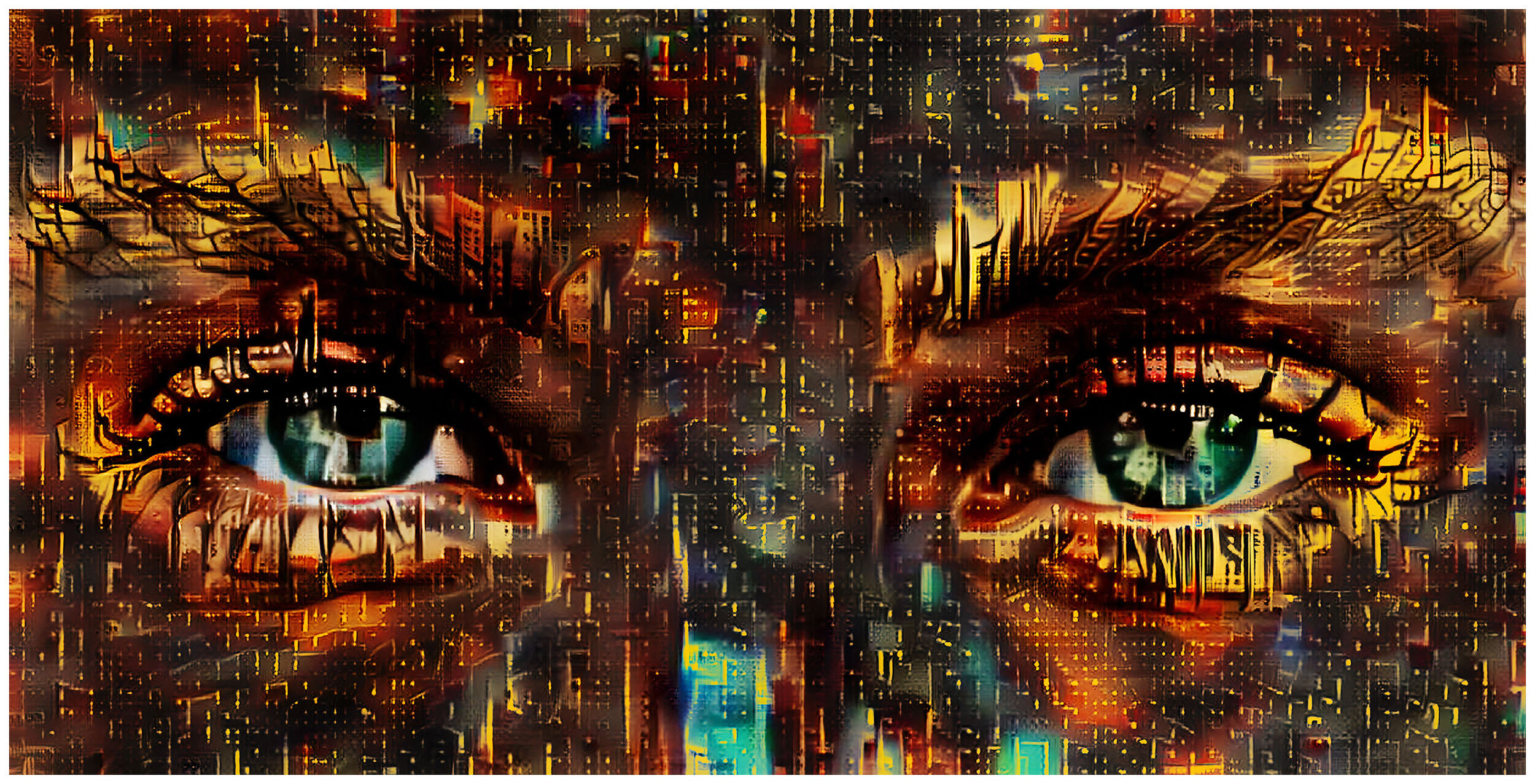HYPERDREAMS
In the period 2014-2016 Van der Most created a series of ‘Hyperdream’ artworks. Installations of screens showed continuous flows of thousands of dream like images. All imagery was created using AI and algorithms. Pieces were installed in locations like the office of Dutch housing website Funda (a commission by NVM makelaars), Ramada hotels, and the Amsterdam KunstRai.
Within the stream of generated images was one visual that intrigued the artist. A pair of eyes, built up by AI out of the crude textures and colors the system recognized in pictures of cities by night. Over the years the eye-visual and its creation principle evolved into a new series of eye-artworks, displayed as physical printed artworks. State-of-the-art AI techniques enabled the artist to create extremely high resolution images and prints.
Hyperdream in Dutch TV program Tegenlicht (2019).
To the artist, the Hyperdream works started as an experiment with creating endlessly changing images and hyper personalization: The art pieces for Funda and Ramada hotels showed continuously transforming (‘personalized’) visuals that were in part based on the website and social media content of the organizations. In that sense the pieces were exemplary for the current use of AI in society, it is increasingly used to created highly personal, dynamic, individualized content. Think of personal advertising, for example.
Dutch TV news show Nieuwsuur with artist Jeroen van der Most talking about one of the Hyperdream artworks (2023).
The eye pieces however have a fixed visual appearance and show a blend of the environment with the human, symbolized by a pair of eyes without a recognizable face. The artwork surpasses the individualism of the earlier Hyperdream works and steps into a more collectivist, holistic world view. To the artist this is exactly the direction that AI and technology will take us in the near future.





